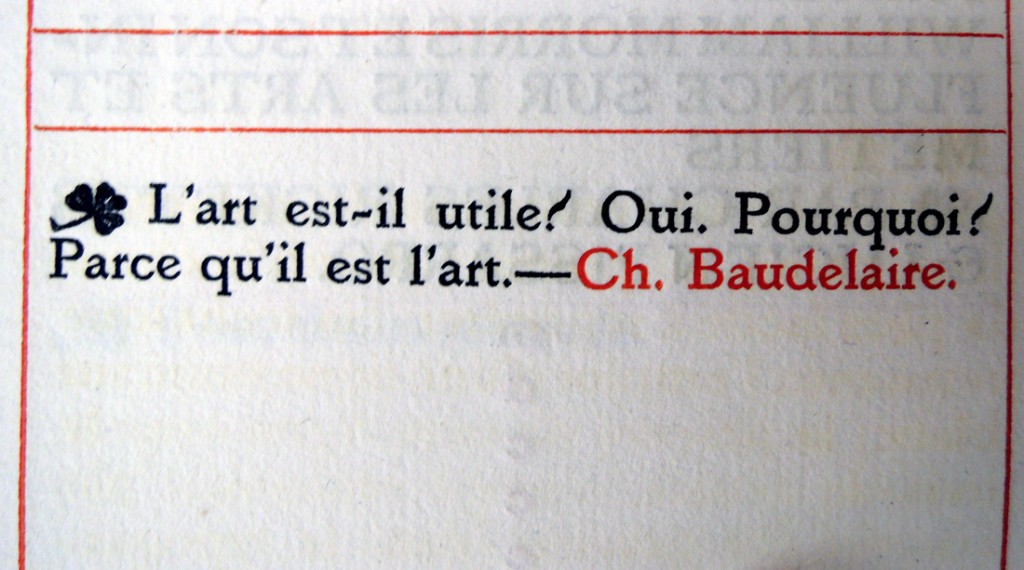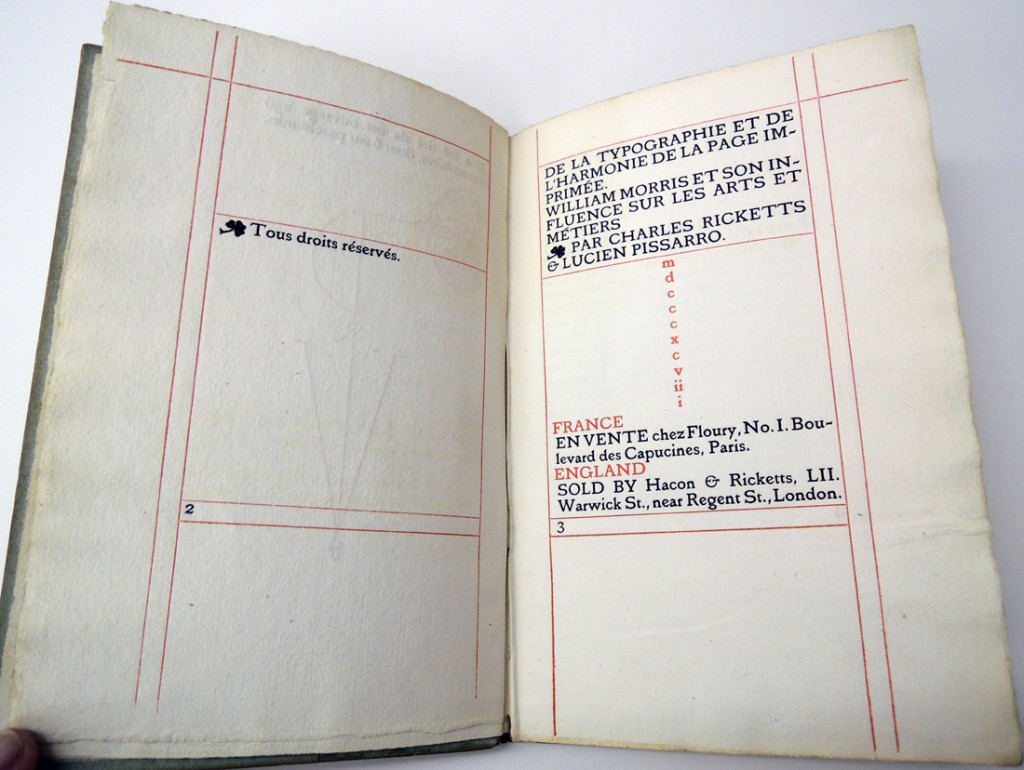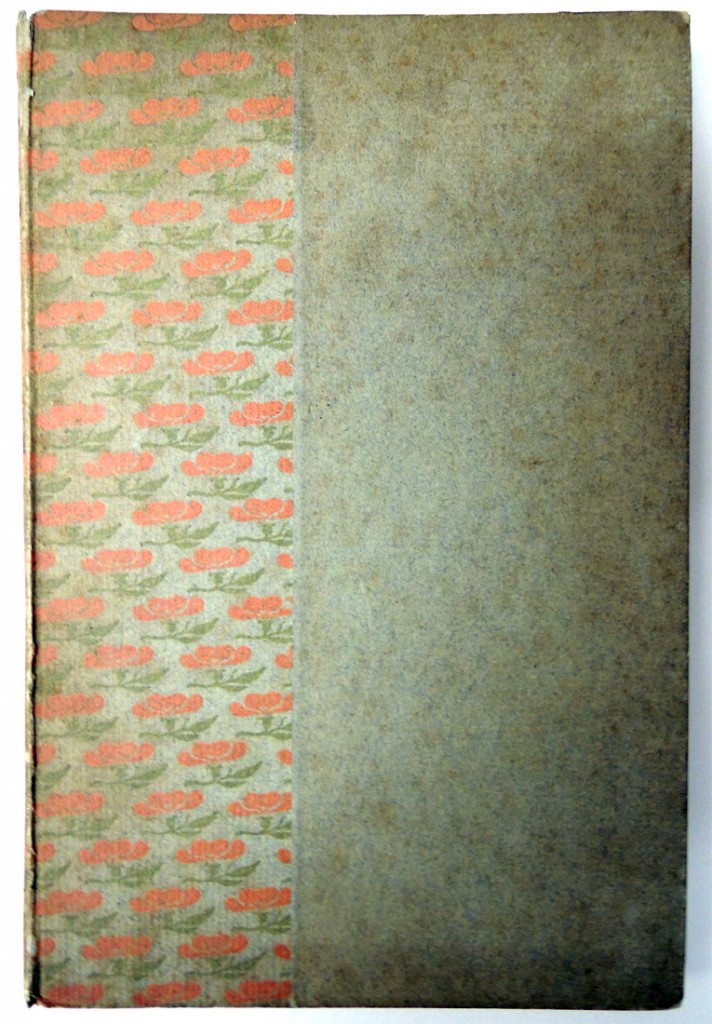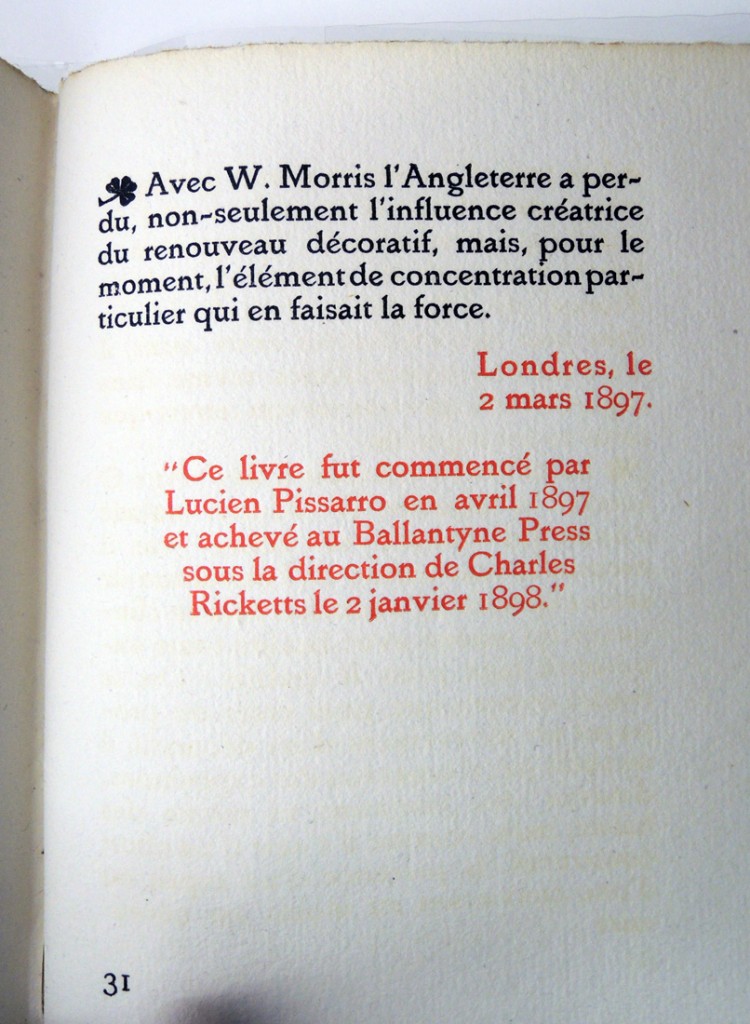
L’art est-il utile? Oui. Pourquoi? Parce qu’il est l’art. -Charles Baudelaire
Is art useful? Yes. Why? Because it is art. -Charles Baudelaire.
 Charles S. Ricketts (1866-1931) and Lucien Pissarro (1863-1944), De la typographie et de l’harmonie de la page imprimée: Wiliam Morris et son influence sur les arts et métiers (Paris: Floury; London: Hacon & Ricketts, Ballantyne Press, 1898). Colophon: Ce livre fut commencé par Lucien Pissarro en avril 1897 et achevé au Ballantyne press sous la direction de Charles Ricketts le 2 janvier 1898./ “Il a été tiré de cet ouvrage 256 exemplaires, dont 6 sur parchemin”–P. [1].
Charles S. Ricketts (1866-1931) and Lucien Pissarro (1863-1944), De la typographie et de l’harmonie de la page imprimée: Wiliam Morris et son influence sur les arts et métiers (Paris: Floury; London: Hacon & Ricketts, Ballantyne Press, 1898). Colophon: Ce livre fut commencé par Lucien Pissarro en avril 1897 et achevé au Ballantyne press sous la direction de Charles Ricketts le 2 janvier 1898./ “Il a été tiré de cet ouvrage 256 exemplaires, dont 6 sur parchemin”–P. [1].
Graphic Arts Collection 2014- in process
In 1889, the artisan publishers Charles Ricketts and Charles Shannon invited the artist Lucien Pissarro to submit images for their magazine The Dial. Within five years, Lucien and his wife Esther Pissarro established The Eragny Press and began printing books of their own, completing thirty-one titles in all. Princeton University Library only holds around a dozen of their books and surprisingly, not the collaboration between Ricketts and Pissarro De la typographie de l’harmonie de la page imprimée.
The Graphic Arts Collection recently acquired one of the 216 copies of this important book, bound in the original grey/green boards decorated in floral motif and a printed paper spine label (256 in the book is a misprint). The text pages are beautifully printed in red and black with the Vale type that Pissarro used until 1903.
We are all fortunate that Ricketts’ essay was translated into English by Richard K. Kellenberger in 1953 [http://digitalcommons.colby.edu/cgi/viewcontent.cgi?article=1345&context=cq]. Of Typography and the Harmony of the Printed Page begins:
“In a renewal of interest in handicrafts, the art of book-making would, at first sight, appear to be the easiest to revitalize. Its limited technique, the placing a black line on white paper, the relationship of this line to the stroke of a pen, adjusted merely to the work of the en- graver (both in printing and in wood-engraving), this does not involve the difficulties which are presented by more complicated or recalcitrant materials – difficulties such as are presented by the technique of weaving brocades or rugs, or of fitting together the pieces of a stained glass window. And yet, throughout the thirty years during which there has been, in handicraft circles in England, an intense preoccupation with the arts, the art of book-making is the last one to come on the scene.”



